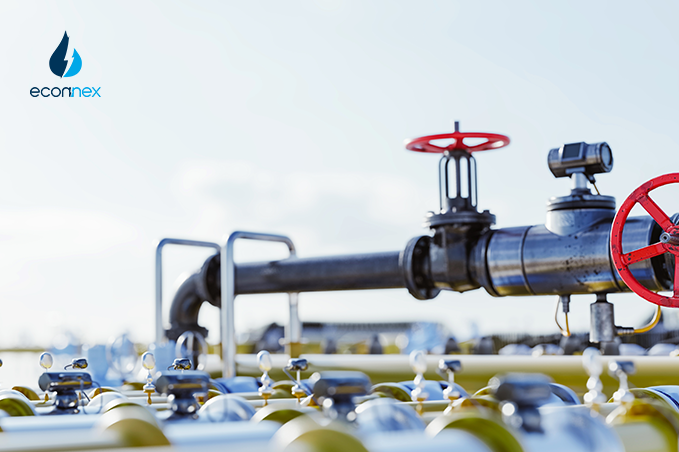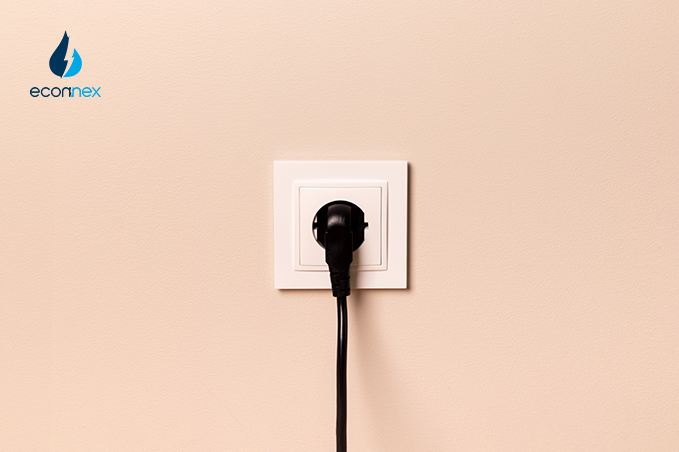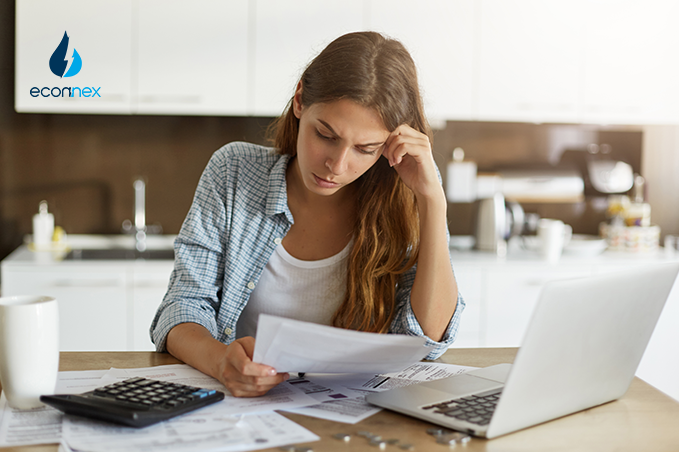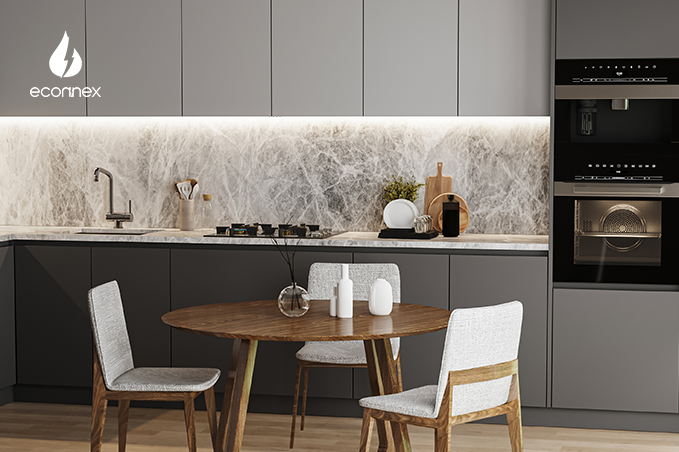Transform your bathroom into an energy-saving oasis! Embrace LED lighting, water-efficient fixtures, and smart heating. A greener washroom awaits!
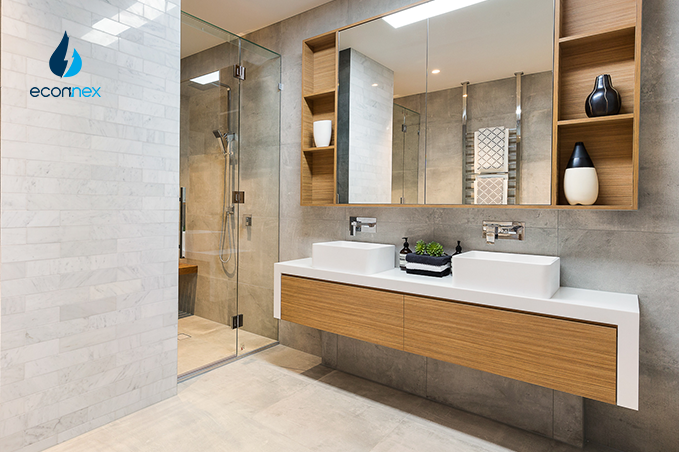
Published on 08/09/2023
By Rachael Rogan-Miner
Energy Comparison
Increasing the energy efficiency of your home is a no easy job. You have to check every single thing inside and outside your house. The bathroom is a great place to start. It’s a place where you spend very little time and yet use tons of energy. A lot of your money can literally go down the drain unless you consider making bathroom energy savings.
Learn ways to make the biggest water and energy savings in your bathroom:
Water heating accounts for up to 30% of a home’s total energy use, and with a standard tank heater between 10-20% of that energy is wasted as water sits and loses its heat to the environment. Change your water heater, go tankless. Tankless units heat water only when there’s demand, eliminating standby heat loss and cutting down on energy use. To save even more energy, a solar water heater can be used to preheat the water going into a heater, be it standard or tankless.
Typical shower heads have 2.5 gallons per minute flow rates, and modern high-efficiency showerheads can reduce that amount by half or more, they provide the same feel of other models while using less energy. Water saving bathroom shower heads maintain pressure without compromising water flow. For every person that takes a five-minute shower, this will reduce their total water usage each day by two and a half gallons. Less water is used, so less energy is required to heat it.
An addition of a simple aerator is one of the easiest and cheapest things to make water-efficient with your tap. It adds air to the tap’s water stream; a steady and stable flow is produced that feels like more water than it is. Like high-efficiency showers, high-efficiency tap aerators are easy to install and can also reduce your water usage by at least half. New models of aerators are designed to keep pressure high while reducing the flow. Don’t forget to check for leaks for drips in your taps, which can waste gallons of water a day.
Note: If you have a tankless water heater, a minimum flow rate is required to activate it. Be sure that the aerator you choose will give you the hot water you need.
Most people don’t take a bath every single day, they primarily shower and mix a bath in occasionally. Bathtubs provide a certain relaxing quality you can get from a good soak than a shower, bathing young children in a tub is easier too. An average tub holds anywhere from 30-50 gallons of water if you fill it up and lesser water if halfway. But if your concern is about the water savings try to switch to a well-designed shower that can offer plenty of relaxation and water conservation. Consider adding a steam shower when switching to a shower- only design. For about 3 gallons of water, a lot find that 15-20 minutes in the steam shower offers exceptional relaxation, physical health benefits.
Toilets use more water each year than every other appliance in your home. But most modern bathrooms come with a dual flush toilet features (has one setting with less water for number 1 setting and more on number 2 setting). If you don’t have a dual-flush toilet, install a flush converter, which allows you to change settings depending on how much water you need. The cheapest option is to install a tank bag, which simply displaces the water used in the tank to reduce the amount of each flush. Don’t use a brick in your toilet tank, as it might damage pipes. Check for leaks for drips in your toilet tank or supply line.
Some bathrooms are way too bright. A lot uses 4-5 light bulbs in their bathrooms to ensure brightness, but this can be a huge waste of energy. The brightness of a room can be measured with an alight meter, which can tell you how bright the room really is. If your bathroom is still using incandescent light bulbs, it’s time swap the bulbs with LED, this will cut the usage and often you can leave some of the lights off too. If you don’t replace your bulbs right away, there are other ways to save lighting energy. Timers are a good idea in any bathroom, especially for children and forgetful adults. Some are even operated by a touchless sensor, turning on when someone enters the room and shuts off when no activity is detected.
Does your bathroom have windows? Although a small bathroom window provides a beautiful view outdoors, it can also allow air in and out of the room, making it harder to heat or cool the area. Consider replacing your current windows with energy efficient ones that carry the energy star label. These windows are insulated to prevent your bathroom from becoming too hot or too cold. Also, check for signs of a draft and caulk around your windows to determine if the air is getting in. For drafty panes cover your windows with plastic.
Sometimes you worry about stepping on a cold floor when you get out of the shower or bath. Choosing the right materials matters, it won’t only determine your bathroom’s overall appearance, but also its energy efficiency. Wood is a great energy saving bathroom ceiling material and will give your bathroom a natural look but it requires regular maintenance and protection from water and moisture. Tiles are a great option for your bathroom floor. Another efficient way to heat up any room is by using radiant floor heating. Instead of hot air coming in from vents in your room, the floor itself heats up through a series of coils. The floor quickly becomes warm, and the heat rises to get the room to the desired temperature. It may cost a bit more to invest in radiant floor heating but is worth the cost because it saves money on heating costs over time.
Bathrooms either get wet or smell, a good ventilation fan takes care of both. Highly efficient bathroom fans can clear a room of moisture and noxious fumes quickly and quietly. Also, turn-off exhaust fan during winter as it pulls the heat and humidity outside.
The heat from the water is rapidly lost as it sits in pipes, waiting to be used. Wrapping the pipe with foam insulation will help the water retention that heat some time longer.
Products such as electric toothbrushes, hair straighteners, electric razors, and others, can still draw power even when not in use or turned on. The best way to conserve energy with these devices is to completely unplug them.
As you brush your teeth or wash your face, turn off the water when you don’t need it. It wastes more than six liters of water a minute.
These simple ways and tips don’t mean you need to completely renovate your bathroom. Start with by changing your habits and see what we can offer at Econnex
